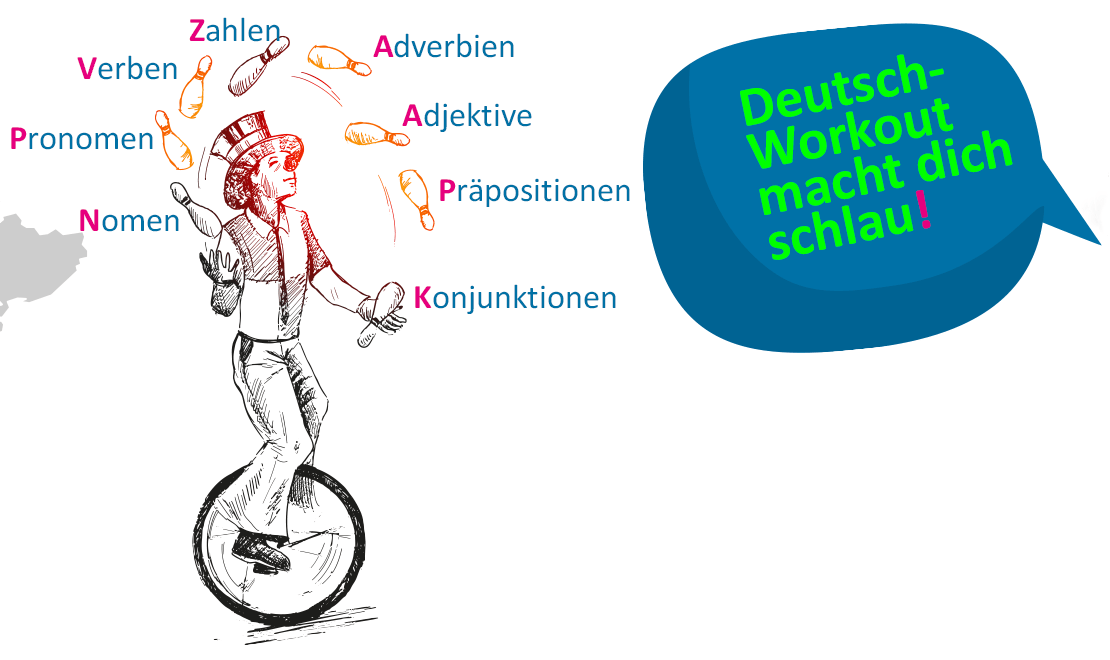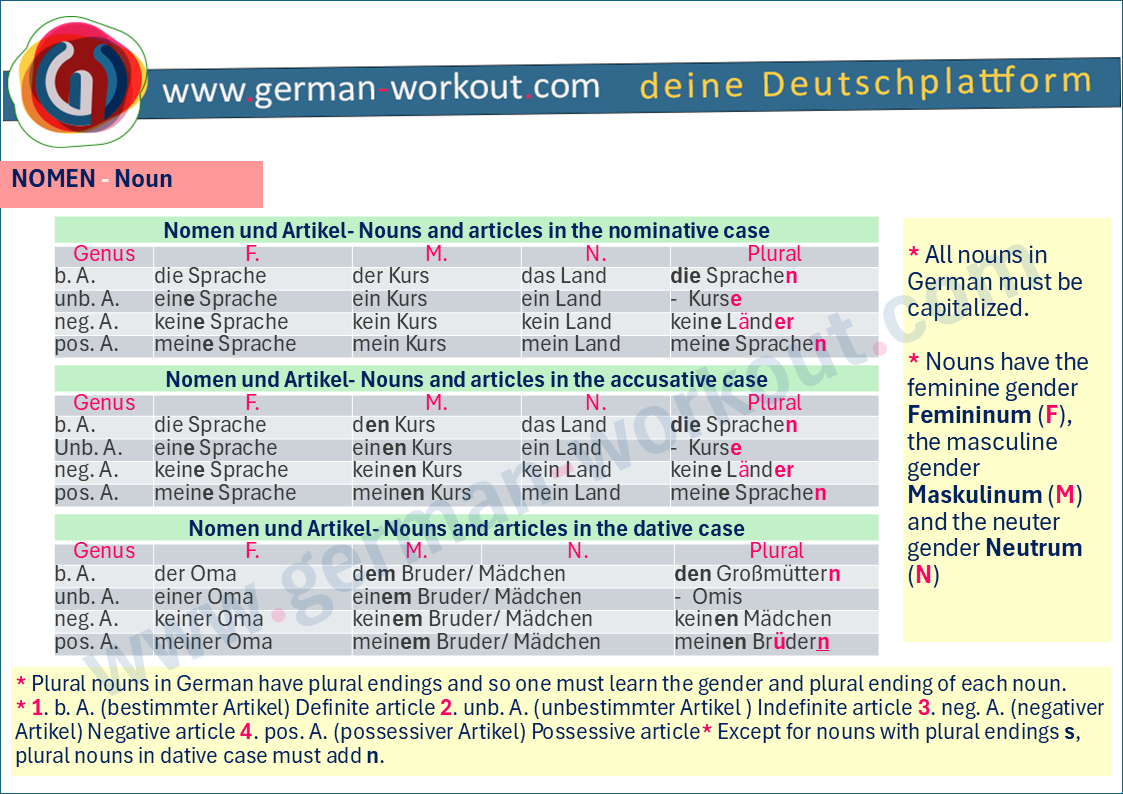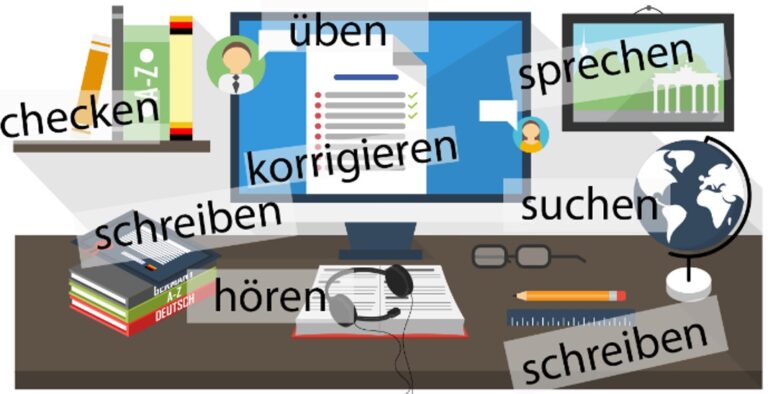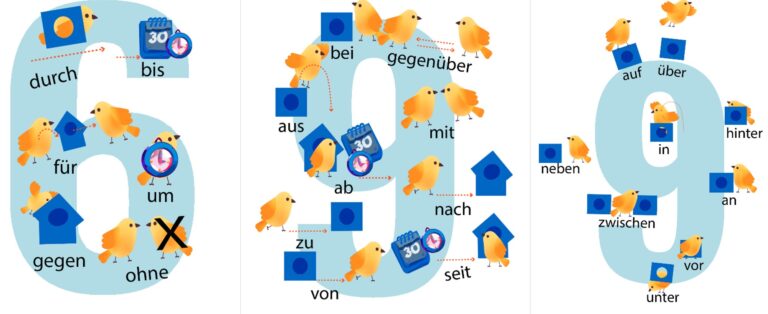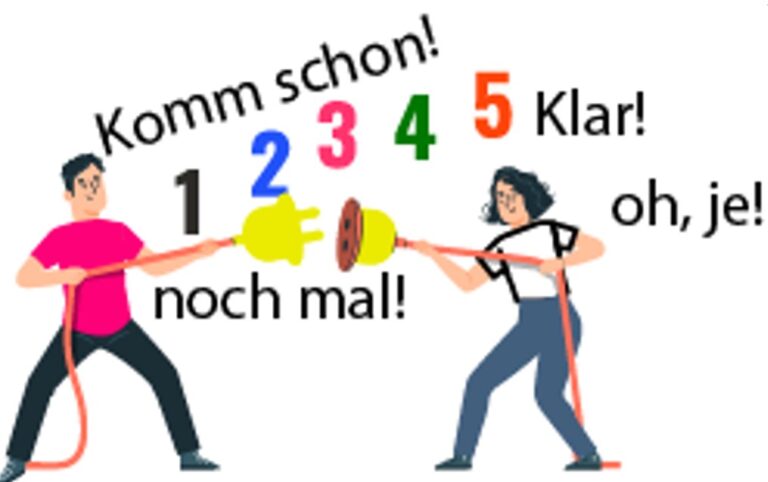On this page you will find an overview and a few rules for nouns and pronouns in German. These rules are intended for learners at A1 level. Have fun reading!
Nouns in German
Nouns in German are capitalized. It is advisable to learn nouns with the corresponding articles and plural endings. In German, nouns are divided into three genders, feminine, “die|” neuter, “das|” masculine, “der”. “Die/der/das” are also definite articles. Indefinite articles of feminine “die > eine” neuter “das > ein” and masculine “der > ein“.
In the plural, nouns have the same article “die”. Nouns are often placed after possessive pronouns or possessive articles “mein/dein/ihr/ihr/sein” etc. “e” is added to feminine nouns and plural nouns. e.g. “dein Papa” (“der Papa”), deine Mama (die Mama), “deine Bücher|deine Hobbies (plural), deine Addresse (die Addresse), dein Land (das Land)” etc.
Attention:
- Pronouns are used to avoid repetition.
- Article endings are changed depending on their position in the sentence.
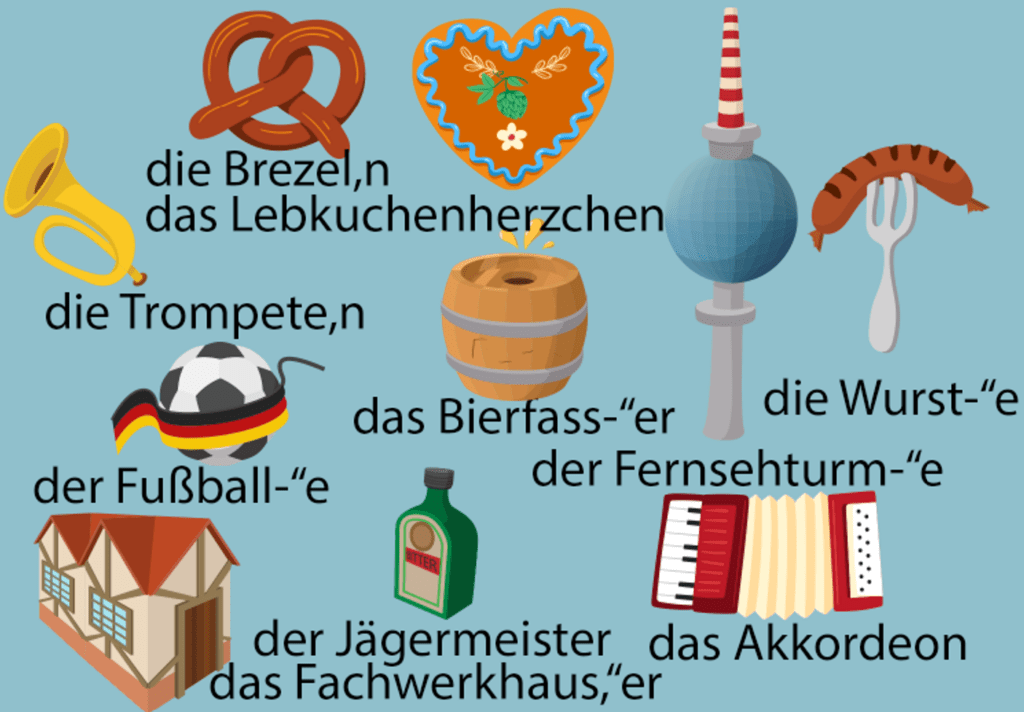
Pronouns in German
Pronouns are words for addressing, addressing and replacing the nouns mentioned. They can be used as a single word in a sentence (e.g. as a replacement) or as an article word before a noun.
| Personal- pronomen | Possesiv- Pronomen |
||
|---|---|---|---|
| Nominativ | Akkusativ | Dativ | Nominativ |
| SINGULAR | |||
| ich | mich | mir | mein |
| du | dich | dir | dein |
| sie | sie | ihr | ihr |
| es | es | ihm | sein |
| er | ihn | sein | |
| PLURAL | |||
| wir | uns | unser | |
| ihr | euch | euer | |
| sie | sie | ihnen | ihr |
| SINGULAR UND PLURAL | |||
| Sie* | Sie | Ihnen | Ihr |
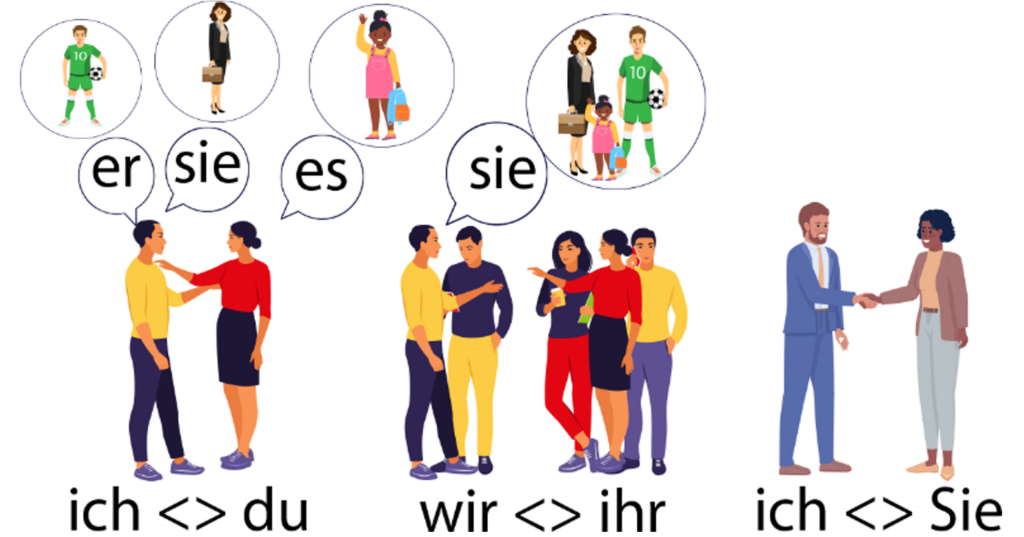
Attention:
1. possessive pronouns do not stand alone, but before nouns. e.g. My glasses are on his table.
2. Nomen sind mit Artikeln zusammen und ihre Pluralformen sind ebenfalls festgelegt. z.B. die Note > die Noten| das Heft > die Hefte| der Notizblock > die Notizblöcke, etc.
3. Pronouns are used to avoid repetition. For example: “Deutsch ist die Amtssprache von den Deutschen, Österreichern und Schweizern. Diese Länder liegen in der Mitte von Europa. Sie haben schöne Landschaften und ebenfalls schöne Sehenswürdigkeiten. Jedes Jahr besuchen sie viele Touristen. Nach ihrer Reise zeigen sie sie ihren Freunden und ihrer Familie sehr gern.”
4. For plural nouns, except for plural endings with “n” or “s” in the dative case, an “n” is written at the end of the noun. See below:
| Nomen | Im Nominativ | (Subjekt) | Im Akkusativ | (direktes Objekt) | Im Dativ | (indirektes Objekt) |
|---|---|---|---|---|---|---|
| Artikel | Negativer Artikel | Possessiver Artikel | Negativer A. | Possessiver A. | Negativer A. | Possessiver A. |
| Femininum | keine Schere | meine Schere | keine Schere | meine Schere | keiner Schere | meiner Schere |
| Neutrum | kein Buch | mein Buch | kein Buch | mein Buch | keinem Buch | meinem Buch |
| Maskulinum | kein Stift | mein Stift | keinen Stift | meinen Stift | keinem Stift | meinem Stift |
| Plural | keine Scheren | meine Scheren | keine Scheren | meine Scheren | keinen Scheren | meinen Scheren |
| keine Bücher | meine Bücher | keine Bücher | meine Bücher | keinen Büchern | meinen Büchern | |
| keine Stifte | meine Stifte | keine Stifte | meine Stifte | keinen Stiften | meinen Stiften |
5. All nouns with the feminine article are replaced with the pronoun “sie“, the neuter article with “es” and the masculine article with “er” to avoid repetition. All nouns in the plural are also replaced with “sie“.

